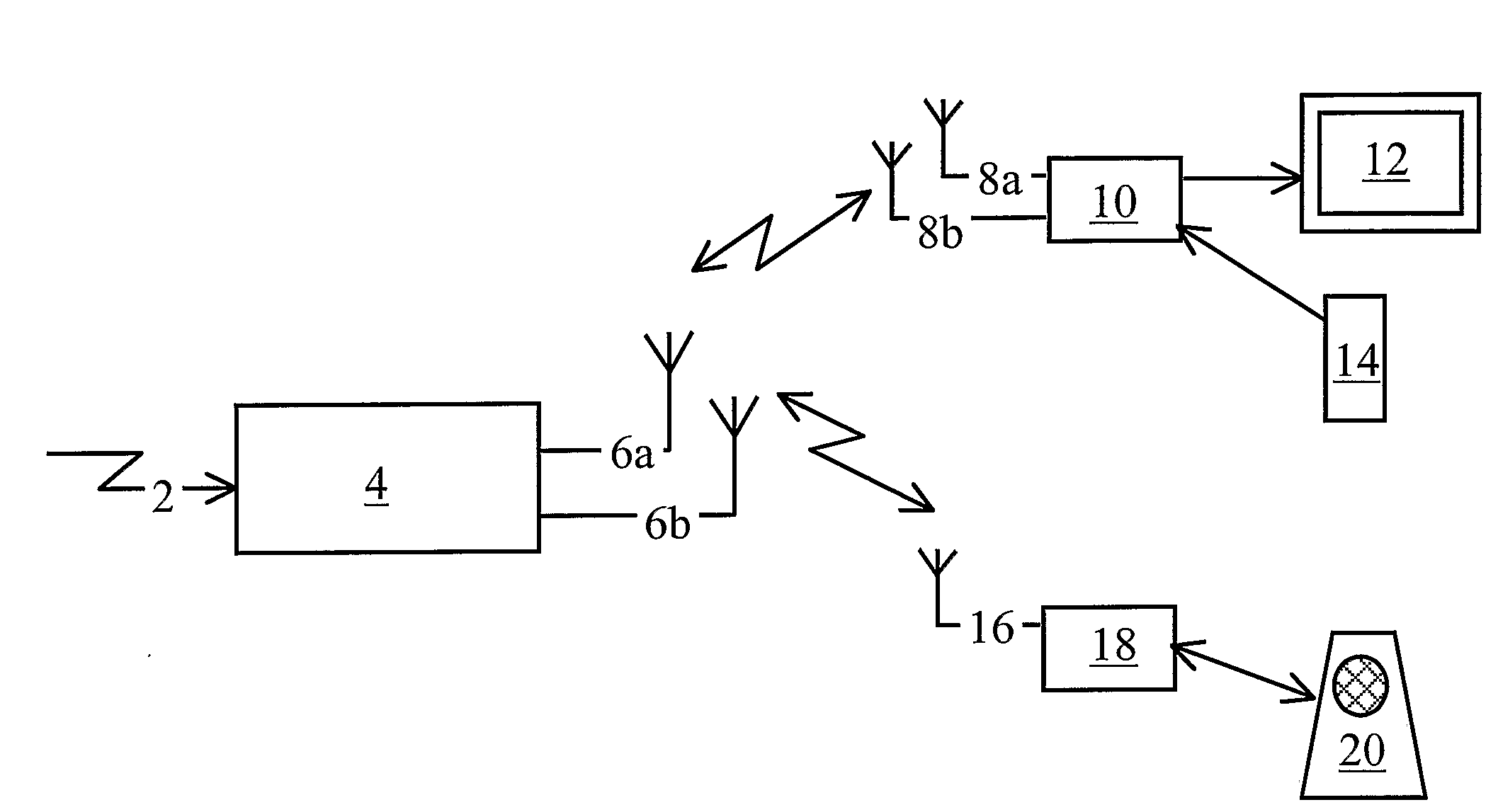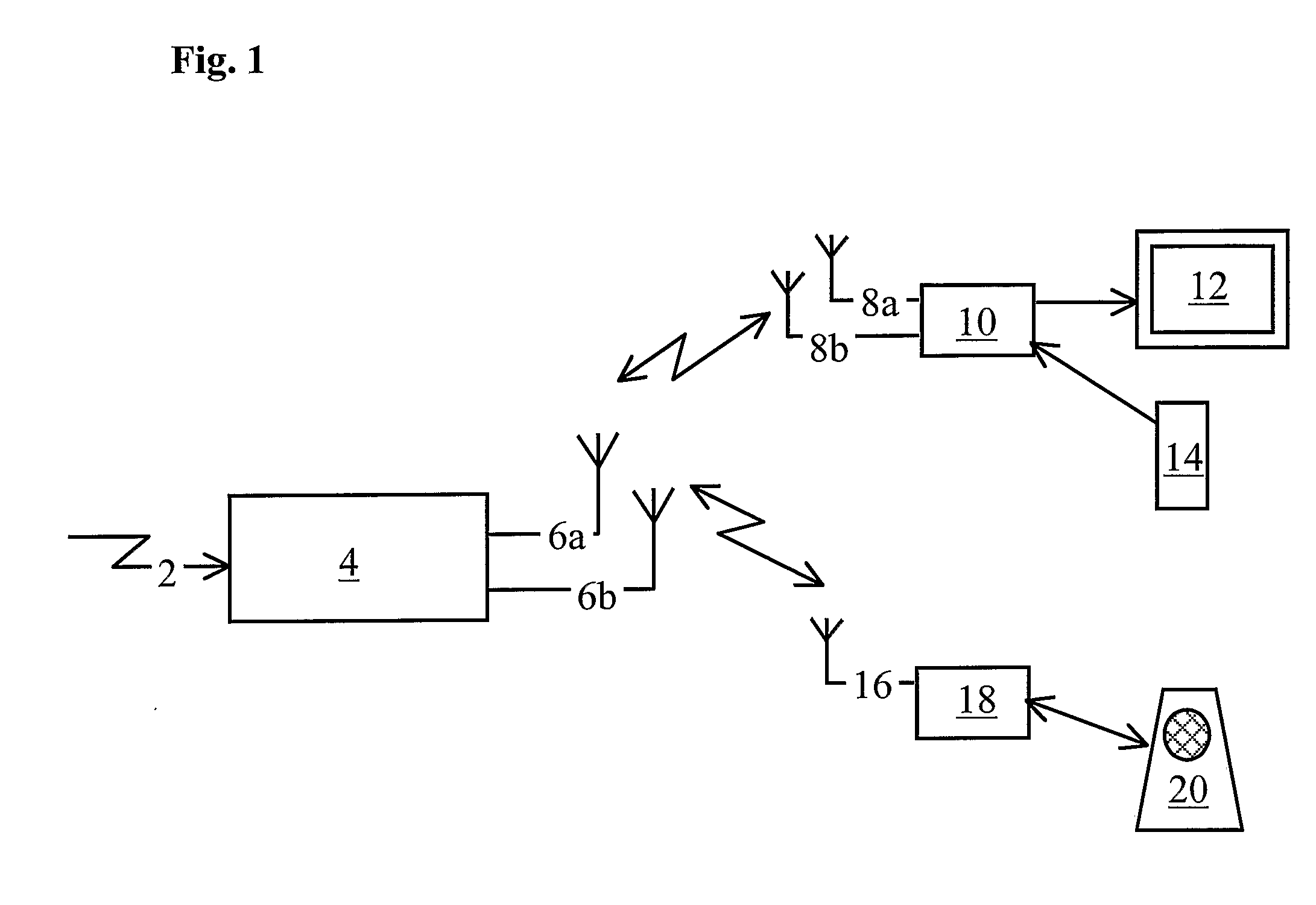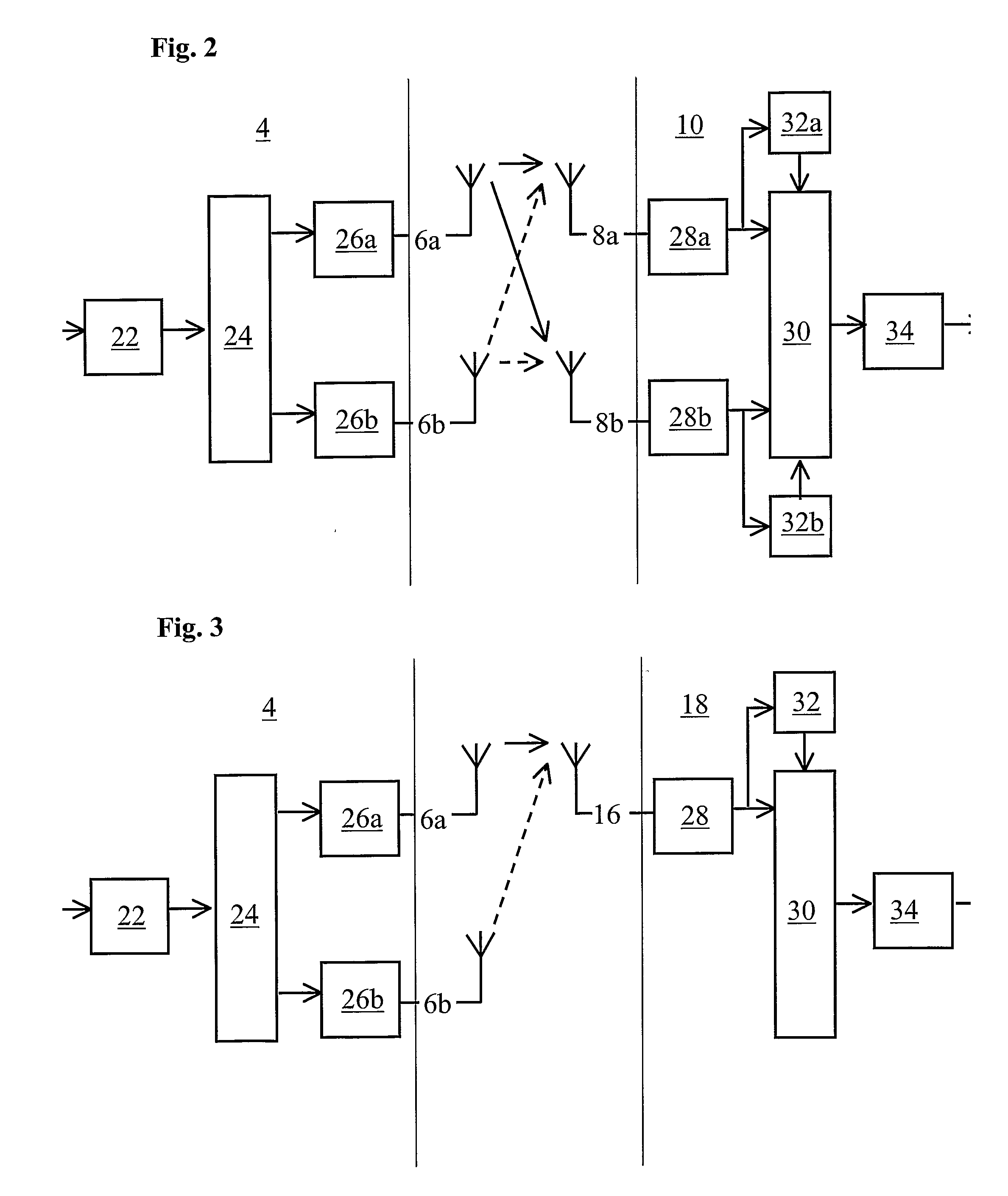Wireless Network System and Devices
a wireless network and wireless technology, applied in the field of wireless network systems and devices, can solve the problems of 16 mbps being available to the application layer, inefficient, and unsatisfactory performance of the 802.11g wireless home media system for consumers, and achieves less sensitivity to the orientation of the device, and improves the resistance to fast fading.
- Summary
- Abstract
- Description
- Claims
- Application Information
AI Technical Summary
Benefits of technology
Problems solved by technology
Method used
Image
Examples
Embodiment Construction
Wireless Media Distribution Network
[0035]FIG. 1 shows a wireless network used for local wireless media distribution in an embodiment of the invention. A wireless gateway 4 receives media content from a broadcast link 2. The broadcast link 2 may be a satellite or cable television broadcast link, in which case the wireless gateway includes a satellite or cable television receiver, or a connection to an external network such as a broadband internet connection, in which case the wireless gateway 4 includes an external network adapter such as a broadband modem. The broadcast link may carry one or more media channels, each comprising audio and / or video programmes.
[0036]The wireless gateway 4 is arranged to select one or more of the programmes for storage and / or distribution to one or more wireless receivers 10, 18. In this example, a first wireless receiver 10 is connected to an audiovisual display 12, such as a television, and receives audio and video signals from the wireless gateway 4 ...
PUM
 Login to View More
Login to View More Abstract
Description
Claims
Application Information
 Login to View More
Login to View More - R&D
- Intellectual Property
- Life Sciences
- Materials
- Tech Scout
- Unparalleled Data Quality
- Higher Quality Content
- 60% Fewer Hallucinations
Browse by: Latest US Patents, China's latest patents, Technical Efficacy Thesaurus, Application Domain, Technology Topic, Popular Technical Reports.
© 2025 PatSnap. All rights reserved.Legal|Privacy policy|Modern Slavery Act Transparency Statement|Sitemap|About US| Contact US: help@patsnap.com



